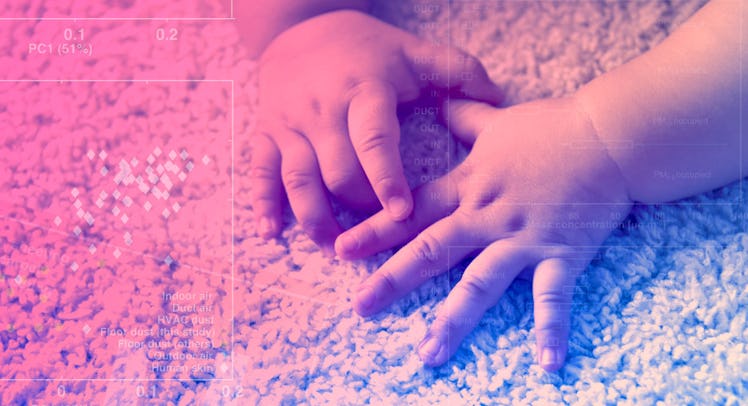A Scientific Case For Ripping Up Your Carpet Before You Have The Baby
They say you have to crawl before you walk. We say, not with carpet.

Carpets actually hate your kids. While some fathers argue that carpets can be safer surfaces for roughhousing, studies suggest that your wall-to-wall runner is packed with pesticides, bacteria, fungal spores, skin cells, pollen, pet dander, lead dust, and dust mites. Suffice it to say that infants and young toddlers, who spend a good portion of their lives with their faces near the ground, don’t appreciate it.
“Carpeting is an incredible sink for dust, mold, and mildew,” Philip Landrigan, director of the Children’s Environmental Health Center at Mount Sinai School of Medicine, told WebMD. “And those all can trigger asthma in children.”
True, one study of nearly 500 newborns found that exposure to rodent and pet dander, roach allergens, and a variety of household bacteria appeared to protect them from allergies, asthma, and wheezing later in life. But the protective effects stop after their first year—and yet your carpet and its creepy crawlies live on. Even the National Center for Healthy Housing lightly cautions against wall-to-wall carpeting due to asthma and allergy risks. We’re not talking minor exposures, either. Walking on a carpet can release up to 100 million of particles of bacterial cells, fungal spores, and other biological particulate matter (bioPM), research suggests, and this is one of the main ways humans come to inhale particulate matter on the ground.
In theory, it should be worse for babies. They are less adept at filtering dust from their bodies, much lower to the ground, and probably kicking up more dust by crawling than you are by walking. So a team of researchers from Penn State University set out to test this theory—with a horrifying tinfoil robot baby, hooked up to “state-of-the-art aerosol instrumentation to track the biological particles floating in the air around the infant in real-time, second by second,” study co-author Brandon Boor said in a statement.
Boor and his team found that resuspended particles (particles that had settled in the carpet but were disturbed by the crawling tinfoil nightmare) included a variety of fungal spores, bacteria, pollen, dust (as well as chemical contaminants within that dust). And the crawling robot baby “inhaled” 20 times more gunk than walking adults. Meanwhile, no word yet on which carpets are most likely to harbor bacteria (we’re looking at you, shag), but future trials may point us in the right direction. “While our research established new methods for infant microbial exposure assessment, much remains to be discovered,” Boor said.
This article was originally published on